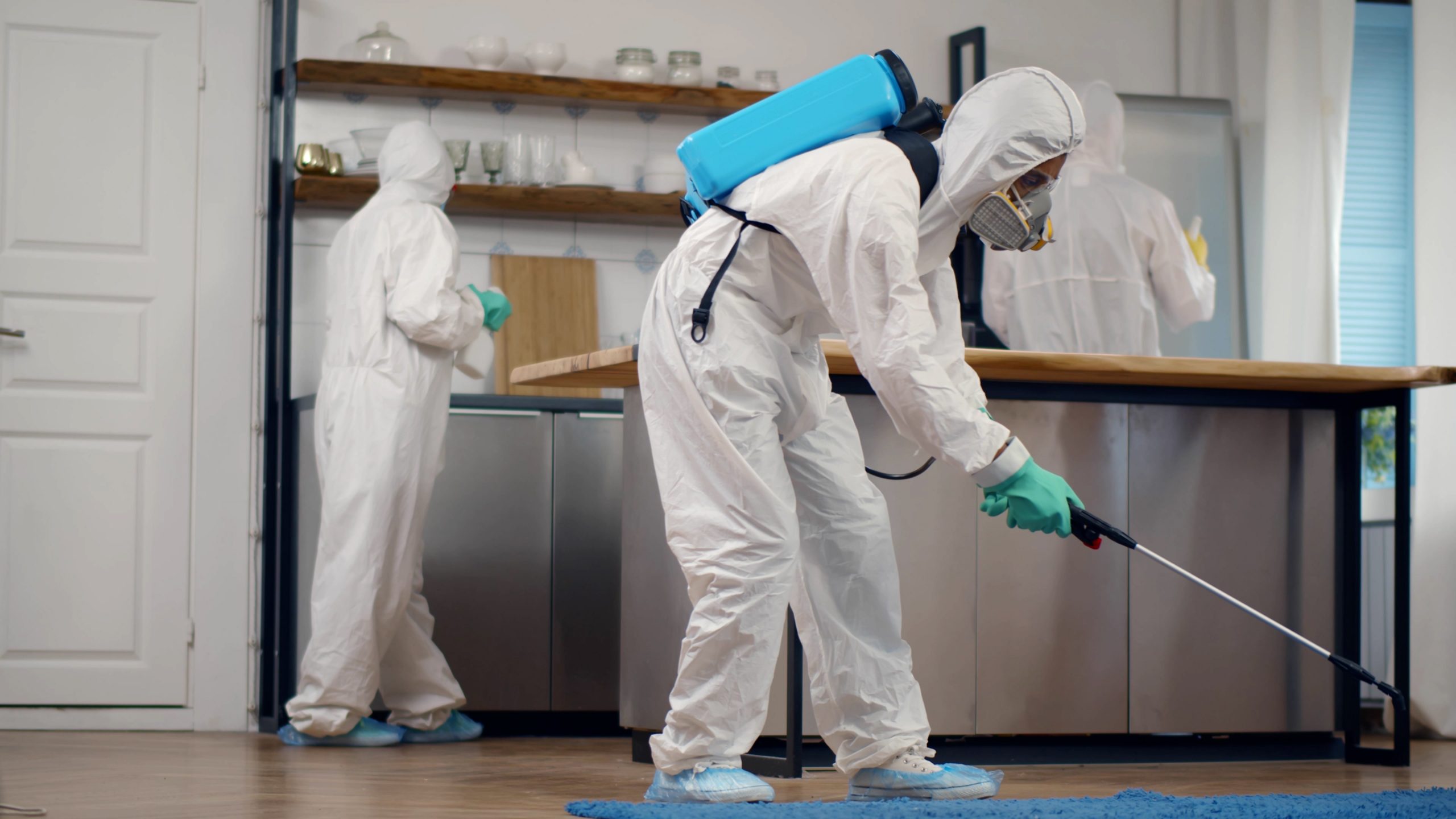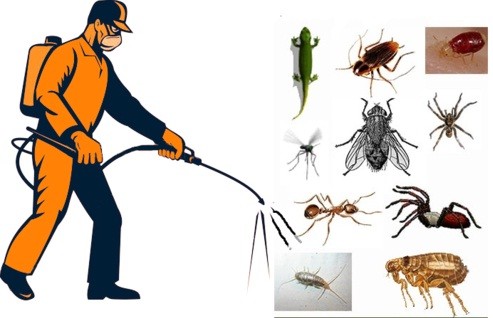Knowing the advantages and disadvantages of several Pest Control Tips
Pest control management is actually a crucial element of keeping healthier and successful situations, whether it's in farming configurations, residential areas, or industrial establishments. Together with the abundance of bugs additionally the prospective harm they could result in, it gets essential to check out various pest control techniques. However, only a few strategies are created equivalent, and comprehending the benefits and drawbacks of several techniques is key to generating well-informed choices. From substance aerosols to biological control, bodily barriers to barriers and baits, and the alternative approach of incorporated pest control, each strategy boasts unique group of advantages and restrictions. Contained in this discussion, we will check out these methods, considering their own effectiveness, threats, green effect, and prospective drawbacks, while we try to grasp a comprehensive comprehension of pest control techniques.
Chemical Sprays: Effectiveness, Risks, and Ecological Influence
Chemical aerosols, though commonly used for pest control, need a consideration of the efficiency, dangers, and green influence. When it comes to efficiency, substance aerosols tends to be very effective in reducing bugs. They consist of active ingredients that target particular bugs, disrupting their unique existence cycles and ultimately eradicating all of them. These sprays provides a simple and instant cure for pest infestations, causing them to a popular choice for lots of property owners and organizations.
However, it is important to admit the potential risks connected with chemical sprays. The chemicals used in these sprays is poisonous to both insects and human beings identical. Drive subjection to these chemicals can cause epidermis problems, respiratory issues, and much more extreme health problems if consumed. Moreover, the overuse or misuse of substance sprays may cause the development of pesticide weight among insects, making them harder to regulate over time.
Also, the environmental effect of chemical aerosols are not disregarded. These aerosols can contaminate earth, drinking water sources, together with environment we breathe. They could hurt helpful pests, birds, as well as other creatures, interrupting normal ecosystems. Additionally, the accumulation of pesticide residues inside ecosystem might have long-lasting effects regarding the total biodiversity and environmental balance.
Biological Control: Good And Bad Points of Using Organic Predators
Making use of natural predators as a type of biological control provides both benefits and drawbacks in pest control tricks. One of several benefits is its an environmentally friendly approach. Organic predators, including ladybugs, lacewings, and parasitic wasps, prey on insects, decreasing their own populations naturally with no chemical pesticides or herbicides. This can help to maintain the ecological balance and preserves biodiversity from inside the environment.
An additional benefit of using natural predators is that they can target particular bugs. Unlike chemical aerosols that may hurt useful insects, natural predators are able to locate and prey on certain pest varieties. Pest control near me. This targeted approach can efficiently manage bug populations without causing problems for additional bacteria from inside the environment
However, there are disadvantages to counting on normal predators for pest control. One restriction would be that it could take longer to see effects versus chemical practices. Normal predators need time for you to find and establish themselves in the region, in addition to their efficiency may vary depending on aspects such as for example temperature and accessibility to prey.

bodily Barriers: Strengths and Limitations of employing Nets and Fences
Actual obstacles, such as for example nets and walls, provide a number of strengths and limitations in pest management methods. These bodily barriers are commonly used to prevent bugs from accessing plants, home gardens, and other areas where they could result in harm. One of several benefits of making use of nets and fences is the effectiveness keeping in mind bugs out. By creating an actual barrier, capable properly block the entry of bugs, such as for example bugs, wild birds, or little mammals. This could easily significantly lower the damage due to bugs which help maintain the top quality and yield of crops. Furthermore, nets and walls tend to be green plus don't involve the aid of substance pesticides, causing them to a safer selection for both humans while the environment.
But there are additionally limitations to using nets and walls for pest control. One limitation may be the cost connected with putting in and preserving these actual obstacles. According to sized the region become secured, the expense of products and work can be considerable. Another restriction is the fact that nets and fences may possibly not be successful against all types of bugs. Some bugs, such burrowing pets or flying bugs, might discover ways to sidestep or over come these barriers. Additionally, nets and fences may also limit ventilation and sunlight, that might have negative effects from the development and growth of flowers.
Barriers and Baits: Understanding Their Unique Effectiveness and Possible Disadvantages
Traps and baits play a vital role in pest control management methods, supplying a very good method of capturing and reducing insects while reducing dependence on chemical pesticides (Pest control near me). These techniques can be useful managing rats, insects, and other additional info unwelcome insects. Traps are made to physically capture insects, stopping all of them from triggering more damage or spreading illnesses. Baits, on the other hand, are materials that attract bugs and are also often laced with poisonous chemical substances to kill them
Traps can be found in various kinds, eg snap traps, glue barriers, and live barriers. Breeze traps are commonly used for getting rats or rodents, while glue traps work well for trapping pests. Live barriers are civilized possibilities that enable the catch and relocation of bugs without hurting them. Baits, alternatively, are generally made of meals and other attractive compounds that entice insects to take them. These baits are often along with pesticides or herbicides or contaminants that eliminate the pests.
One of the primary benefits of barriers and baits is the targeted strategy, concentrating on specific pest types while minimizing injury to non-target bacteria in addition to planet. In addition they offer a non-chemical substitute for pest control, reducing the risks of chemical pesticide use. However, like any pest control method, traps and baits have actually their unique disadvantages. They might maybe not completely eliminate pest communities, needing continuous monitoring and servicing. Additionally, the potency of traps and baits may differ depending on the pest varieties, their particular behavior, plus the ecological circumstances. Careful location and routine assessment are important for optimum results.
incorporated Pest Management: Advantages and Challenges of a natural Approach
The holistic strategy of incorporated Pest control (IPM) offers many benefits and poses distinctive problems in the field of pest control. IPM is targeted on the prevention, spying, and power over pests through a combination of methods that minimize the utilization of pesticides. One of the primary features of IPM is their ecological friendliness. Through the use of alternate practices such as for example biological control, cultural practices, and environment control, IPM reduces the reliance on chemical pesticides or herbicides, creating a safer and healthier planet for individuals and wildlife. Additionally, IPM encourages lasting bug management solutions, because stresses the importance of read the full info here understanding bug conduct and ecology. This information enables specific treatments that address the main causes of pest infestations, versus just managing the outward symptoms. However, implementing IPM tends to be tough. It requires a thorough understanding of bug biology, in addition to the ability to correctly monitor and identify pests. Additionally, IPM typically calls for a substantial expense of the time and resources, because entails normal monitoring and utilization of numerous tricks. Nevertheless, the great benefits of IPM, such as reduced pesticide usage and long-term pest control, ensure it is an important strategy in neuro-scientific bug control.
Bottom Line
